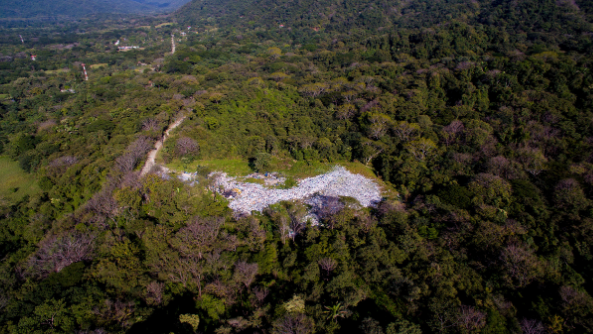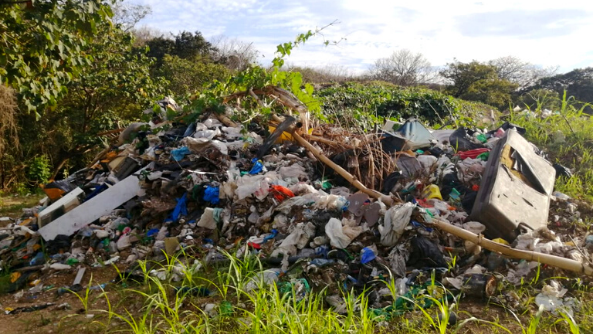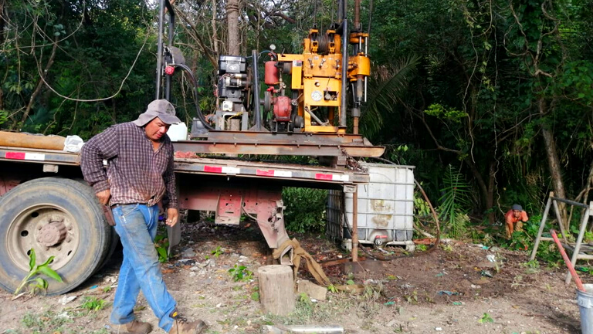Today, every time a Nosara neighbor takes out their waste they know that a truck from the Municipality of Nicoya will pick it up and take it to a sanitary landfill in Santa Cruz. But this was not always the case. For more than 20 years that waste remained in Nosara, in an open-air dump.
The existence of an open-air dump has a great environmental impact. And for that reason, the Nosara Civic Association (NCA) has been working on a permanent solution to this problem.

Background
There were many things that had to be solved and put in place before the process of closing the dump could begin. Before 2019, the Municipality had not been collecting the waste in Nosara. It took almost ten years of constant pressure to persuade the municipality to start this service.
The next step was for the NCA to regain physical possession of the property. Our trash had been collected by a private company that ran the dump. This was an important service for the community. It took another few years to successfully negotiate a settlement with the company to leave the site and to enter into a legal agreement to evict the people who lived at the landfill and sorted through the garbage. This was accomplished in 2020 and the NCA was able to take possession of the property.
Although the accumulation of waste was stopped, there was still 20 years’ worth of accumulated waste on the site to be dealt with. It must be treated, as it poses a high risk to the health of people and animals, as well as the risk of potential contamination of the aquifer that supplies water to a large part of the population.
According to estimates, the Nosara landfill held 36,000 cubic meters of waste – a similar amount to more than 10 Olympic swimming pools combined.
The NCA hired chemical engineer Kathia Elizondo to start the technical shutdown process. Elizondo is an expert in this type of process; she participated in the closure of the Río Azul dump – the largest in the Central Valley.
We decided to interview her so that she could explain what the impact of the Nosara landfill has been, what should be done, and why it is so important to financially support the NCA in this project.
Uncontrolled Landfill
The first thing Elizondo explained is that there is a big difference between a sanitary landfill and a dump, like the one we had in Nosara.

A sanitary landfill is a place technically conceived to receive waste, with adequate engineering designs and with protocols that help to minimize the risks of the impact of garbage. In a landfill there is no type of planning. They are simply sites destined to deposit waste.
Perhaps you might ask yourself: What would be the problem of having a specific place to dispose of all the waste of a community? The answer is not as simple as it seems. According to Elizondo, the first point against the Nosara dump is that there was no waterproofing of the soil.
Without waterproofing, the waters released by the residues (which are known as leachates) carry a high pollutant load, initially biological, but over time they can be more chemical.
Leachates are not only produced by the decomposition of organic waste. They can also be generated by objects such as batteries, televisions or electronics, which, when added with rainwater, begin to release metals that are harmful to health. if the space is not waterproofed, they seep through the ground and pollute groundwater or aquifers.
The other leachates that do not infiltrate, remain at surface level and tend to end up in nearby streams or rivers and eventually contaminate groundwater in nearby sites. This could also negatively impact animals that use these sources for and water affect the health of aquatic species
Elizondo identified another problem posed by the existing waste. Biogas is produced as a result of the decomposition of organic waste.
Biogas is classified as a greenhouse gas that enhances the impact of global warming. Sometimes the biogas produced in garbage dumps causes explosions that lead to landslides or landslides.
What is a technical closure?
When we talk about technical closure, we are referring to a remediation. We are trying to minimize the impact of the remaining garbage to minimize the possibilities of causing more environmental damage.
One of the protocols that the NCA is complying with is groundwater monitoring. Three holes were drilled on the property and groundwater samples are being taken to test for leachate contamination in the aquifers.

According to Eizondo, the closure is in the analysis phase to understand what is the best way to treat the waste. When that is determined, a process will be designed to treat it.
For example, one of the stages consists of a study to determine the best way to waterproof the soil, to avoid any type of leakage of pollutants into the soil. Next all the waste must be consolidated – creating a kind of mountain. The design must not be prone to any type of collapse or accumulation of water from rain.
Finally, the surface over the waste must be waterproofed so that rainwater does not enter; this can complicate the decomposition of the waste.
In addition to this, there are many details that are being analyzed: the location of chimneys to provide an adequate release of the biogas that may be generated, the construction of a lagoon to treat leachates, and the entire design of controlled evacuation of rainwater – to channel the waters in such a way that in the winter overflows or floods are avoided.
How can you help?
Given the critical importance of protecting our groundwater and aquifer for our community, the NCA made a decision to move forward with this expensive project of properly closing the dump, before all the financing had been secured. This is a project that cannot wait. Our water is our life.
According to budget estimates, this project has a cost of US $ 584,886 – money that has not yet been raised. The NCA is currently fundraising for this important and necessary project. Some money from NCA reserves was used to fund the first phase of planning.
In the Civic Association of Nosara we dream that when the technical closure is finished, a community park can be built in that space It would include a skatepark, amphitheater and other attractions designed to promote better cultural integration in the community. It is centrally located between the tourism sector and the local population.
From the Civic Association of Nosara, we invite you to donate and help us raise the necessary funds to be able to finish this project of such importance for our health. Please support us by clicking on the following link: https://nosaracivicassociation.com/donate/
You can write to us at info@nca.cr with any ideas, suggestions or questions.
Thank you
